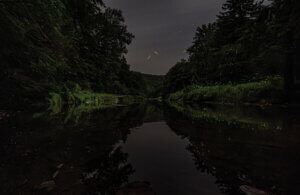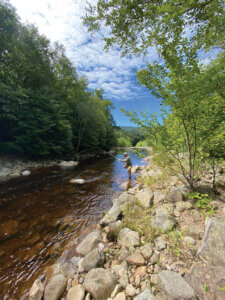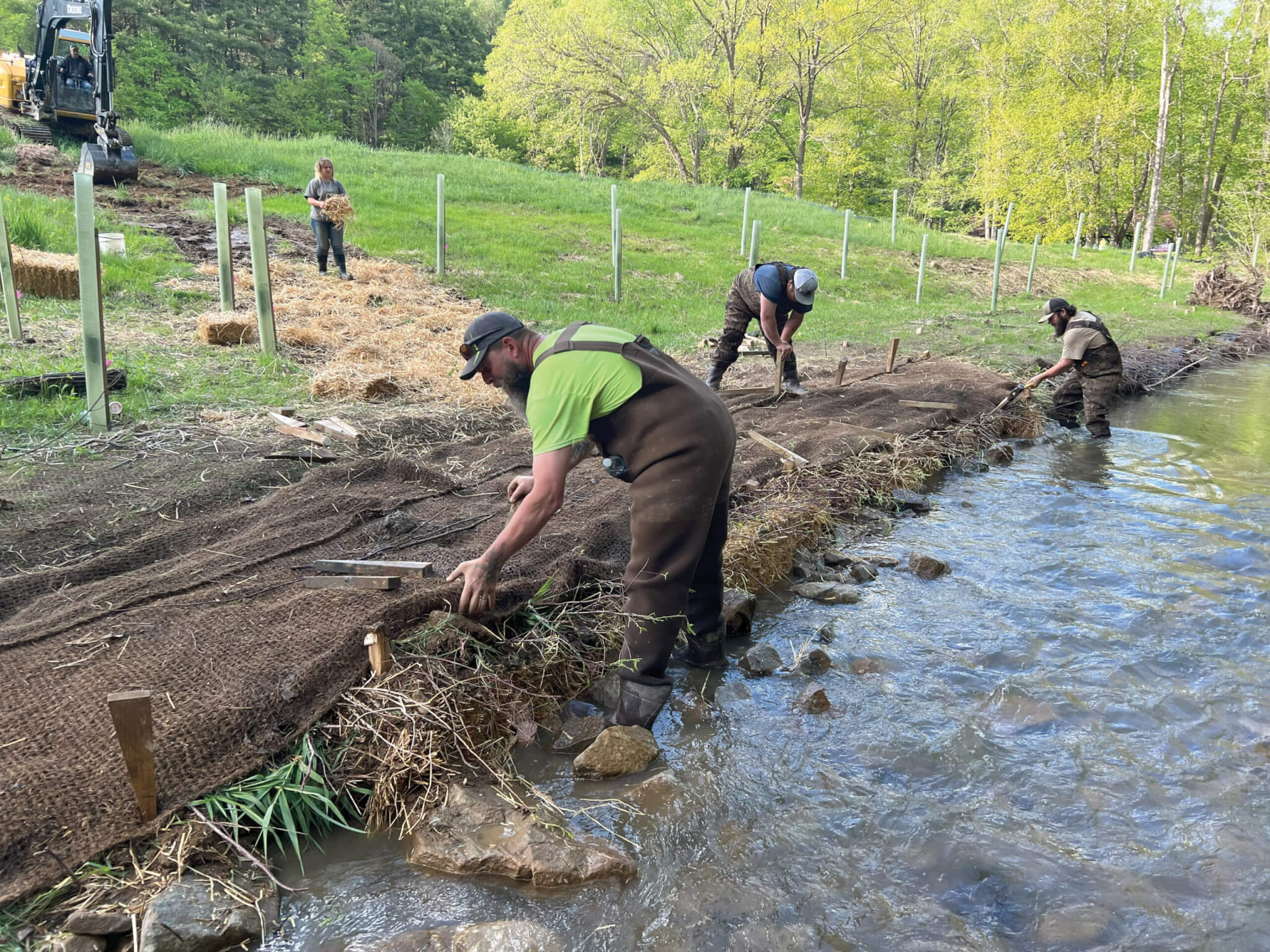
Stream restoration at state parks and forests is bringing delicate ecosystems back into balance.
This story was originally published in the March 2024 issue of Wonderful West Virginia. To subscribe, visit wonderfulwv.com.
Written by Laura Jackson
When it comes to big projects, sometimes it’s best to have a partner. This is especially true of stream restoration. In recent years, three West Virginia streams and their streamside, or riparian, areas have been improved and brought back to health, and the parks they flow through have been updated, too.
For stream restoration projects at Tomlinson Run State Park and Watters Smith Memorial State Park, the West Virginia Division of Natural Resources (WVDNR) paired with the private company Water & Land Solutions. The solutions put in place are based on what’s known as “mitigation banking”—a system in which a development that necessitates habitat damage at one site can purchase offsetting credits that support the restoration of streams and wetlands elsewhere.
“For example,” explains Nate Ober, vice president of mitigation services at Water & Land Solutions, “when the Department of Highways puts in a new road and channels streams into culverts or moves them, they would buy mitigation credits to offset the impacts. We provide those credits.”
Development affects streams in a number of ways. Streambeds may be straightened to allow for roads or agriculture, eliminating the undulations and deep pools that fish need. Additionally, removing vegetation above and along a riverbank increases temperature, erosion, and sedimentation, which can make the stream uninhabitable for invertebrates.
While restoration work must be precise, it’s carried out with heavy equipment.
“We’re realigning the channel,” Ober says. “Often, we’ll put the stream back in a historical location. Farmers may straighten a channel and get it out of the way so they can farm a field and get the water to drain. We undo all that. We might put the stream back in the center of the valley and, instead of it being straightened off to the side, put meander bends and sinuosity back into it, with an active connected floodplain.”
Adding boulders, log jams, and stumps creates natural, varied features, oxygenates the water, and helps animals to move and migrate. Like traveling a road, stream water speeds up when a stream is straight and causes more erosion as it travels. Bends slow the water down, and pools form where fish can thrive.
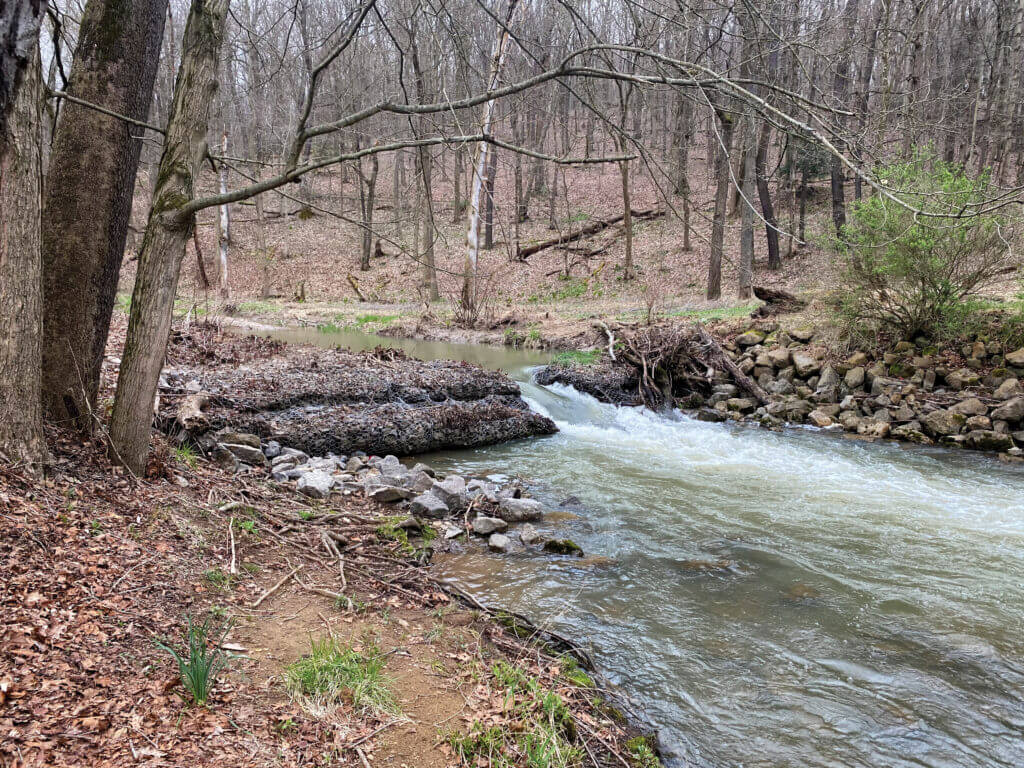
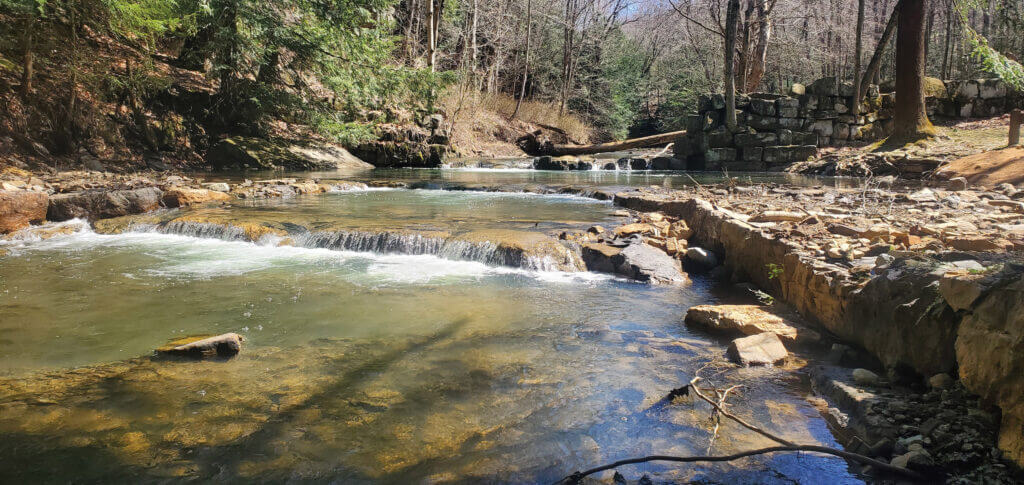
Restoring the Run
Tomlinson Run State Park is the only state park in West Virginia’s Northern Panhandle. Its roughly 1,400 acres cover both developed and wilderness areas in Hancock County, parts of which are heavily forested and known for picturesque shale and sandstone cliffs. The run itself is stocked with trout, has one tributary, and flows through the park into Tomlinson Run Lake.
Historically, erosion at Tomlinson Run degraded aquatic habitat before the WVDNR undertook restorations in 2021. Over the years, development of the nearby highway had impacted the stream, which responded by shifting its position and eroding the opposite bank.
Partnered with the WVDNR, Ober and his team spent a year restoring approximately 8,000 feet of Tomlinson Run. This included transplanting new boulders and logs, creating natural obstacles, and recreating the stream’s natural undulations.
“We made a lot of habitat,” he says. “We created riffles that increased dissolved oxygen, and we decreased sediment that was getting into the river from the riverbank erosion. The pools are deeper. They have rocks and boulders and woody debris the fish can live in.”
The team also recreated a more natural riparian area around the run, planted native trees, and removed invasive species like Japanese knotweed and privet. The native trees have since grown 6 feet tall.
On Tomlinson Run’s tributary, Ober says his group removed a series of bass ponds that dated back to the park’s creation. The earthen dam impoundments were succumbing to erosion and beginning to fail. Additionally, these impoundments trapped leaf litter and macroinvertebrates that would otherwise move throughout the stream as a food source for fish.
“This ecosystem is all connected. When you dam it up, you disconnect the headwaters from the receiving waters. So we removed the impoundments and created streams and wetlands through that tributary that feeds into Tomlinson Run.” Just as they had done with the primary stream, the restorationists planted native species in the riparian zone.
“All this leads to a better fishery downstream,” Ober says.
Taming the Waters
Like Tomlinson Run, Watters Smith Memorial State Park faced problems with erosion in Duck Creek, which flows through the 532-acre park in Harrison County. The Duck Creek Mitigation Bank sits within the West Fork River watershed.
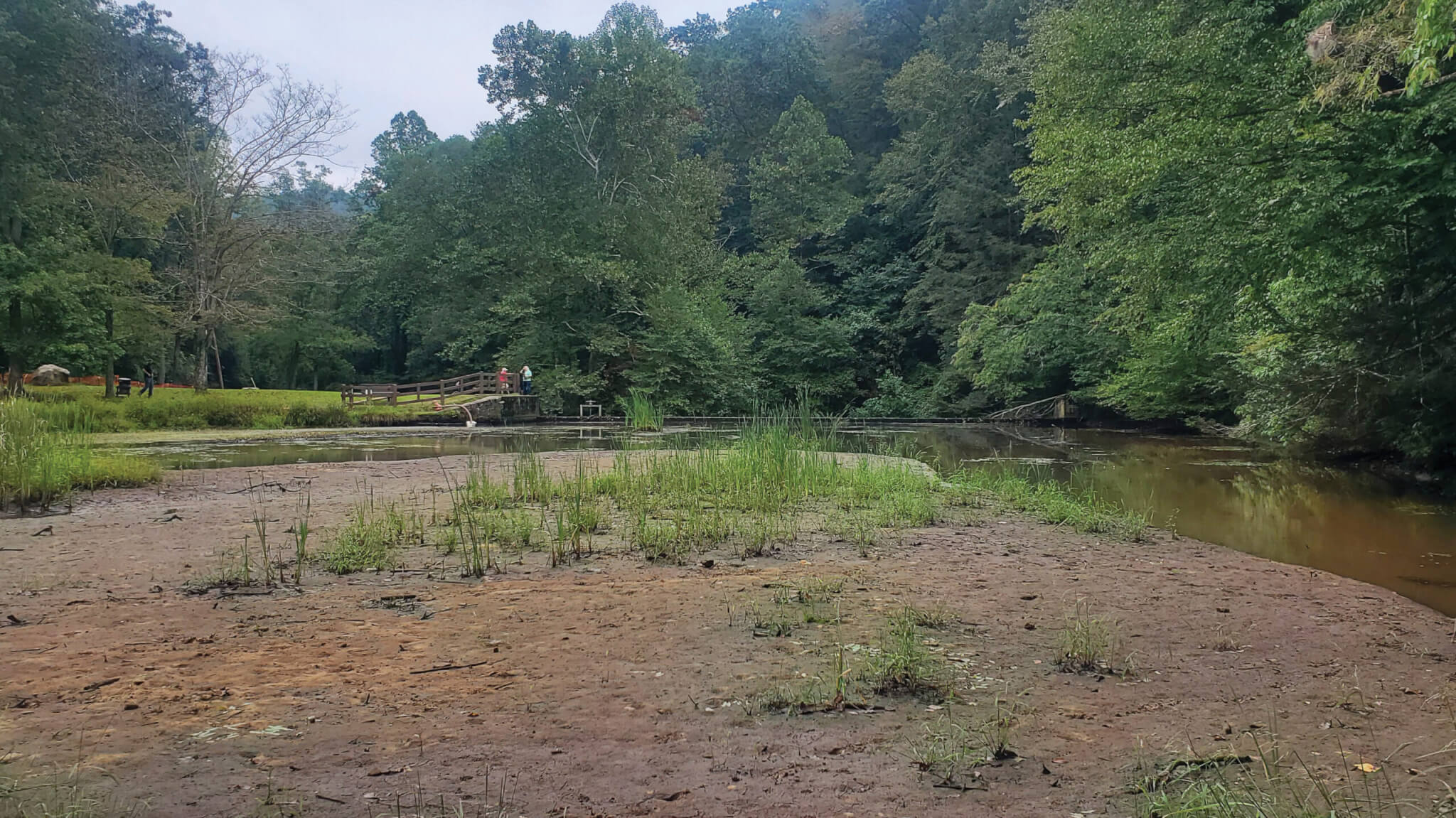
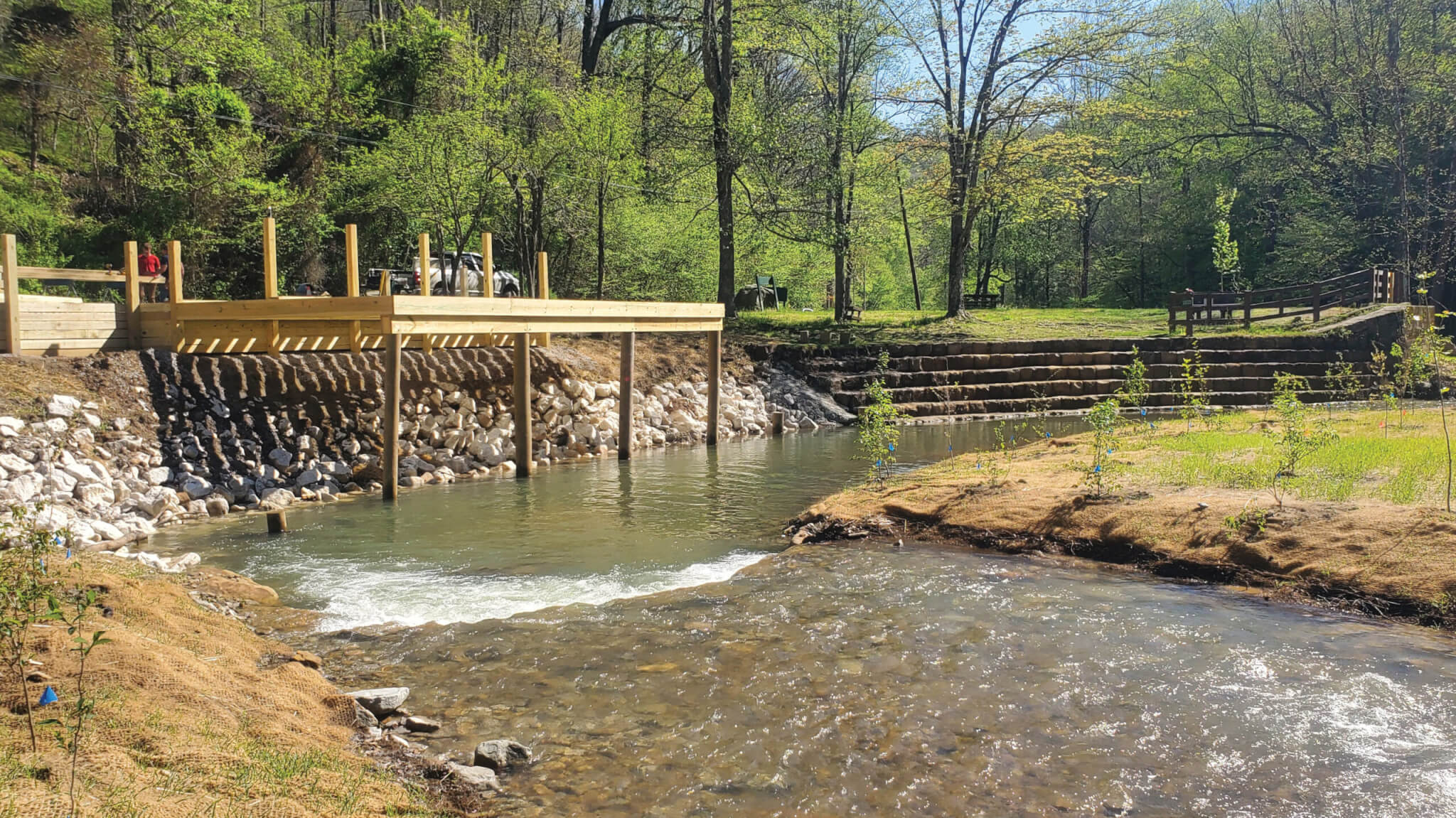
The project in Harrison County was much larger than its counterpart in the Northern Panhandle, Ober says. “We built a little over 3½ miles of restoration on the streams,” he says. “And we created about 15 acres of new wetlands.”
To prevent erosion, the team reinforced the stream bank; they also restored the floodplain to allow for naturally occurring floods. And adding cover and woody debris to the stream increased aquatic habitat and fish diversity and made a path for migration through the watershed.
According to Roger Wolfe, a WVDNR engineer who worked on the project with Water & Land Solutions, the sheer banks on Duck Creek were a challenge, but the restoration efforts have been successful.
“It was in pretty bad shape,” he says. “But last spring, we had a flash flood in that area. There was probably 4 to 6 feet of water going through that stream. The water came out on the floodplain like it was supposed to, went down the valley, and went back into the stream. We proved that the restoration has staying power. It was amazing to me how much water came down through that valley and what little damage it did.”
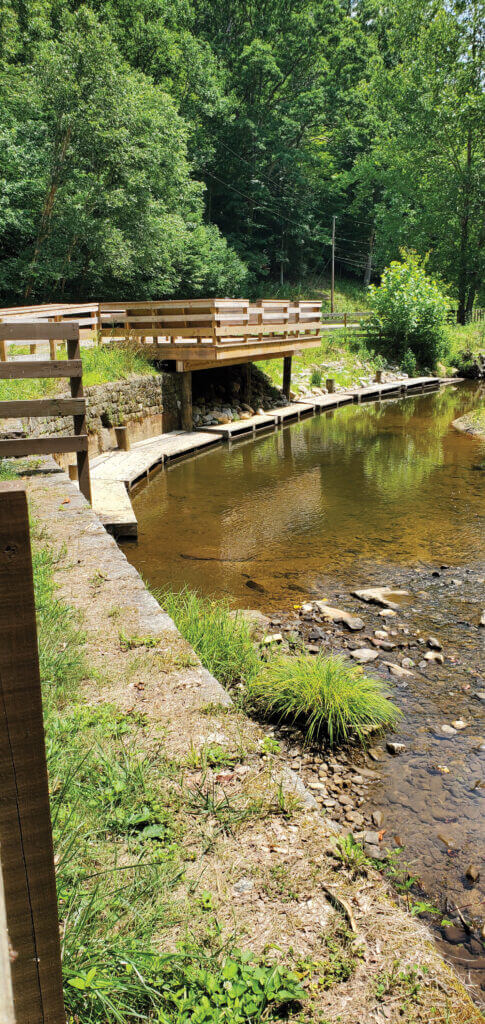
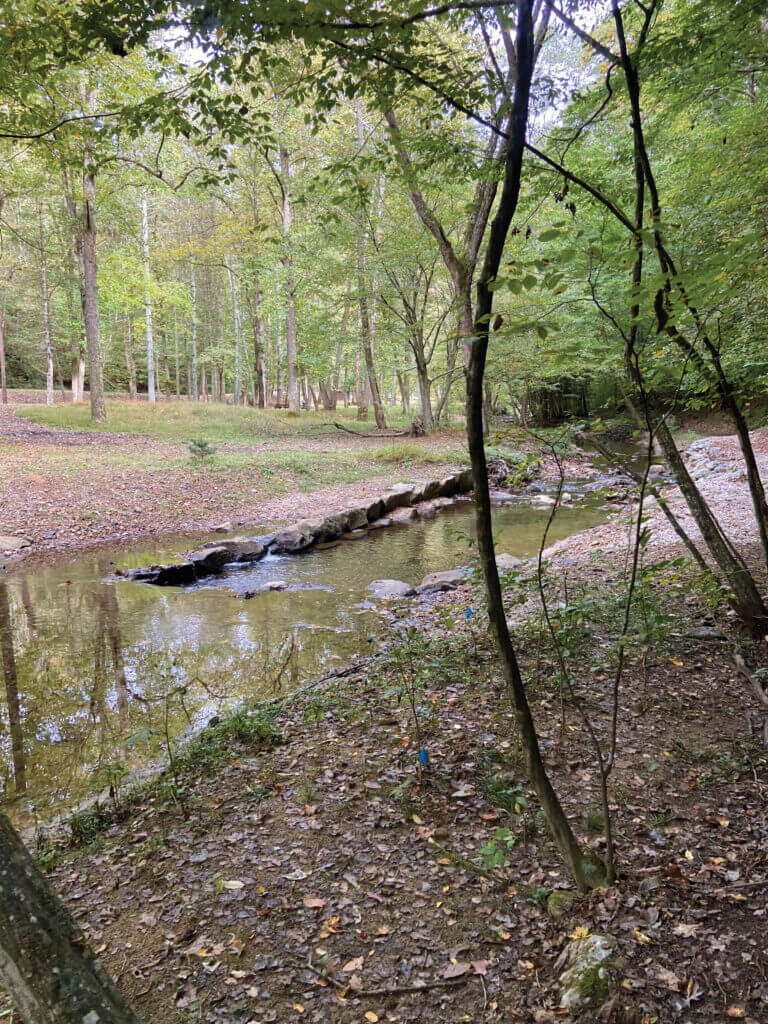
Similar Restoration, Different Program
The WVDNR undertook a similar restoration effort in the Kanawha State Forest, not through mitigation banking but, rather, as part of the state’s In Lieu Fee Program. “They’re similar programs,” Wolfe explains. “The In Lieu Fee Program is run by the Department of Environmental Protection. It’s a government-run program to offset impacts.”
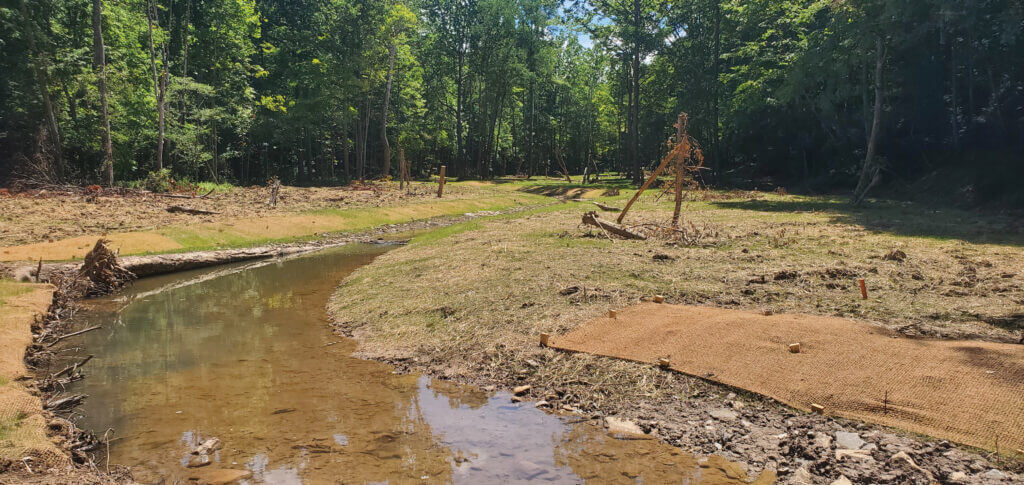
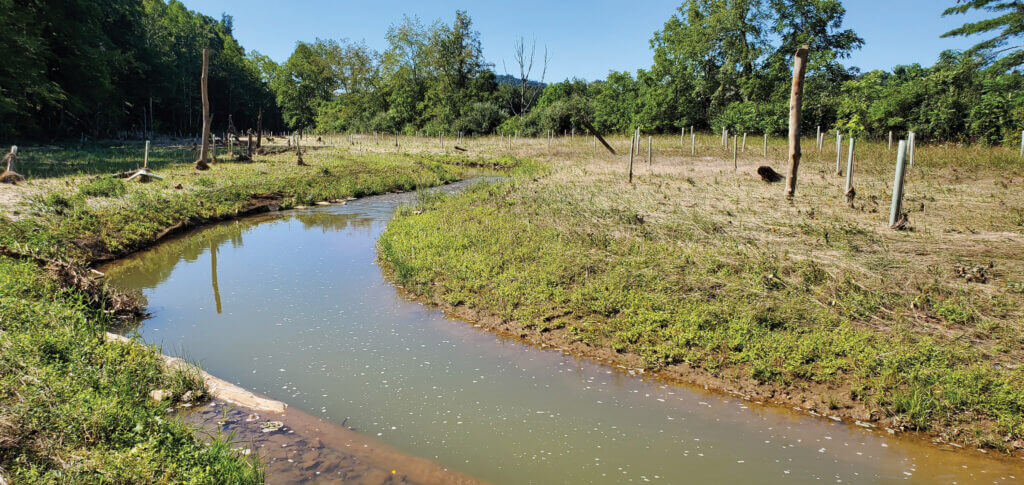
Kanawha State Forest’s Davis Creek was dammed in the 1930s by the Civilian Conservation Corps to create Ellison Pond as a swimming area. But the pond separated the upper and lower sections of the stream and repeatedly filled with sediment, which made it unsuitable for long-term trout habitat. Now that the team has removed the dam, the creek again flows freely. Installing structures like cross veins has created deeper pools for trout, and workers have reinforced the stream banks to prevent erosion.
Ellison Pond was a Class Q fishing area, reserved for children and those with mobility issues. This designation remains now that the stream has been rehabilitated, and ADA-compliant fishing piers have been constructed.
“Only kids and people holding that Class Q permit can fish,” Wolfe says. “So that gives them the entire restored mile of stream with the holes and structures that will hold fish. We’ve increased the accessibility of the stream for those with disabilities.”
Perception Versus Reality
Both the In Lieu Fee Program and mitigation banking allow entities like the WVDNR, the DEP, and Water & Land Solutions to tackle bigger projects. Nevertheless, Ober sometimes encounters public hesitation about the nature of the work.
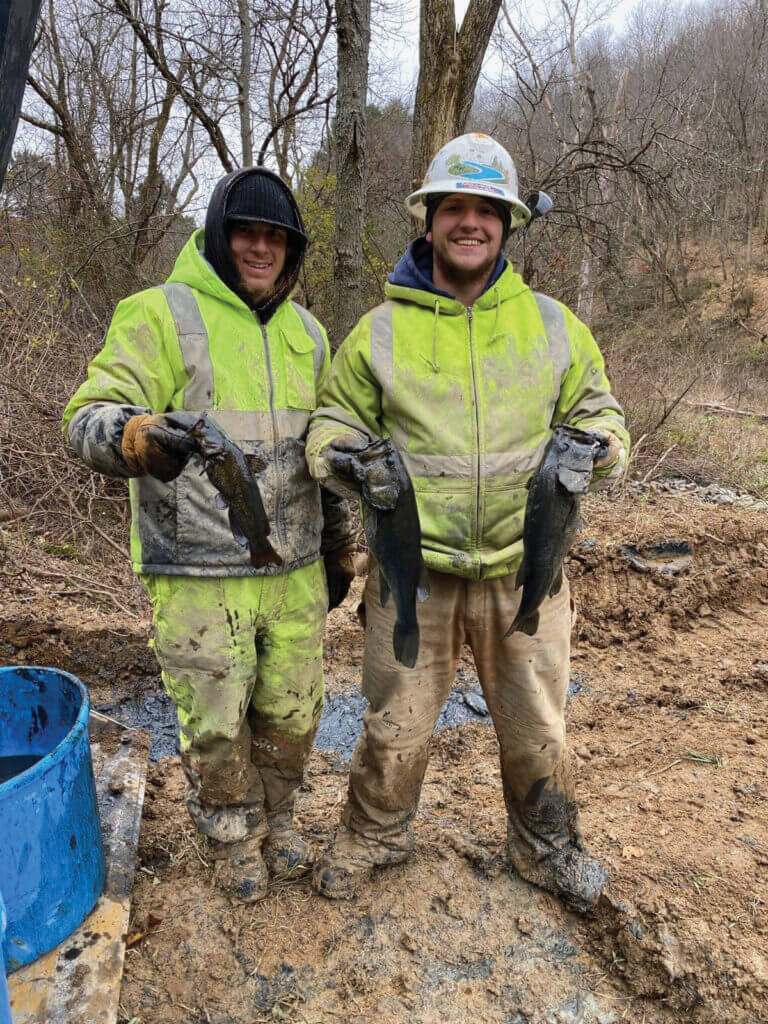
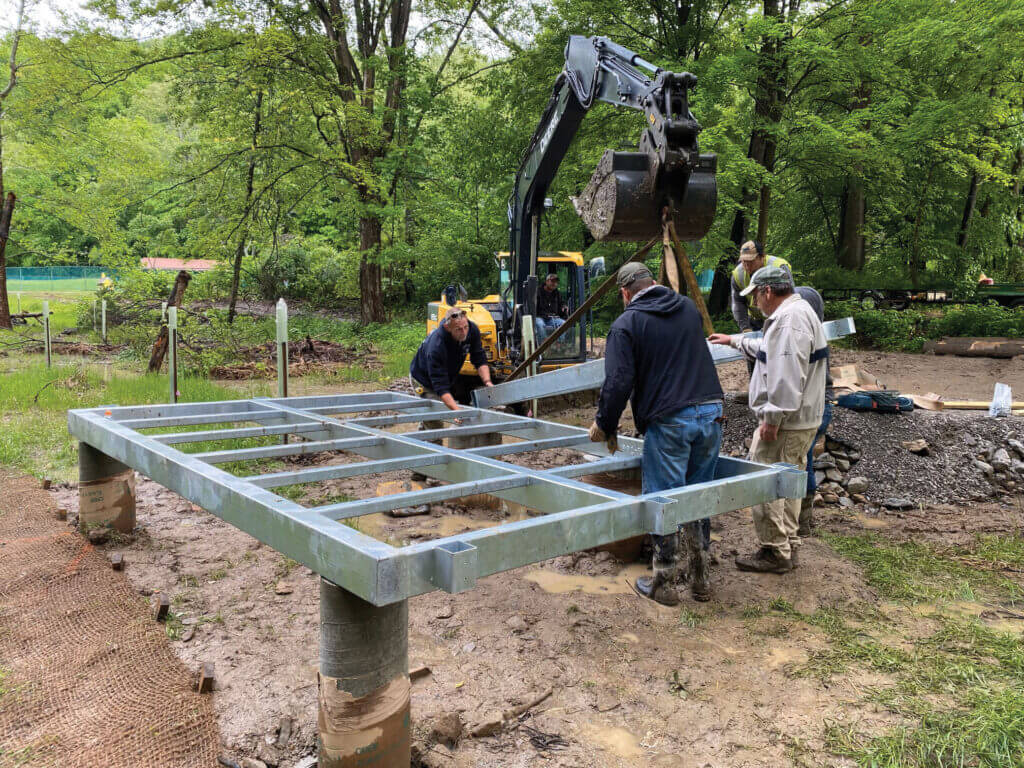
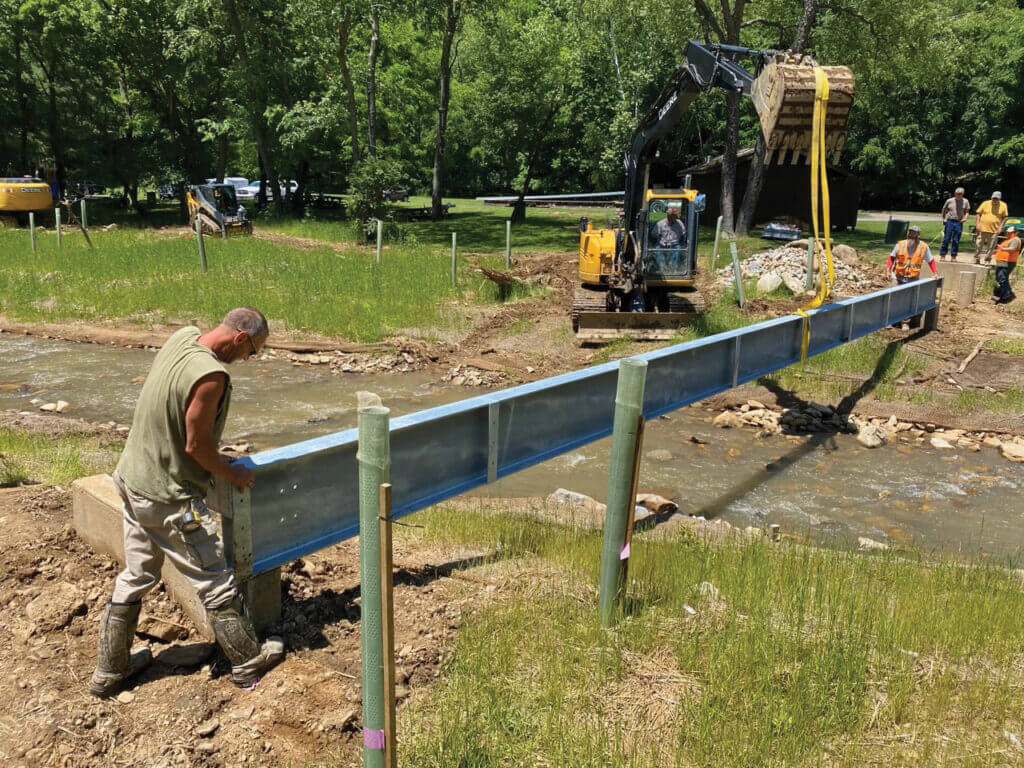
“One of the perceptions I think some people have is that we’re getting land for free and taking advantage of public lands,” he says. “But in the case of what we’re doing with WVDNR, we’re not only improving the park and restoring the habitat, but we’re also putting in amenities that help public access.”
Beyond the stream work on Tomlinson Run, Water & Land Solutions worked with the WVDNR on improvements to the park. The company put in over a mile of accessible trails, a half-dozen accessible fishing platforms, a new pedestrian bridge across the stream, and several wildlife viewing areas. Watters Smith received mountain biking upgrades, including new trails and improved stream crossings.
Wolfe echoes Ober’s sentiment. He says most visitors are excited about restoration and upgrades, although a few lamented the loss of the historic structures at Kanawha State Forest. Nevertheless, the changes have been a huge uplift for the park and its visitors, many of whom now have a unique and exclusive opportunity.
“We get a stocking with rainbow and golden trout,” he says. “So we get to take part in the Gold Rush. It’s created areas where kids can fish, as well as folks who have permanent disabilities. We now have two accessible fishing piers. So it gives those people a chance to access those natural resources without the same kind of competition they might see in other places or places that they can’t go.”
Ultimately, stream restorationists want their work to align with nature’s original design.
“Streams do change over time, and they’re a dynamic system,” Ober says. “And we try to help Mother Nature. We don’t want to nuke the whole site and start all over. We want to see what it’s evolving into and how we can help Mother Nature get there. If you do it right, then the ecosystem just takes over.”




